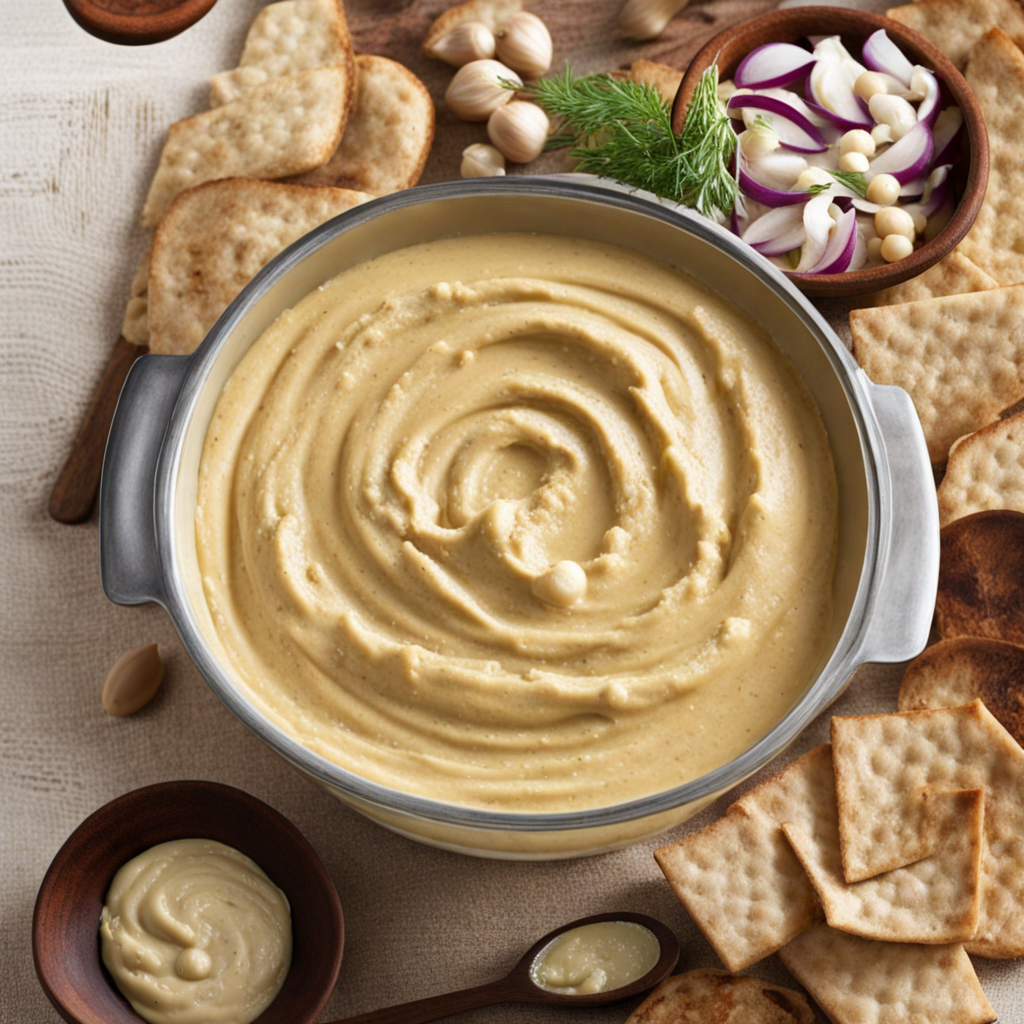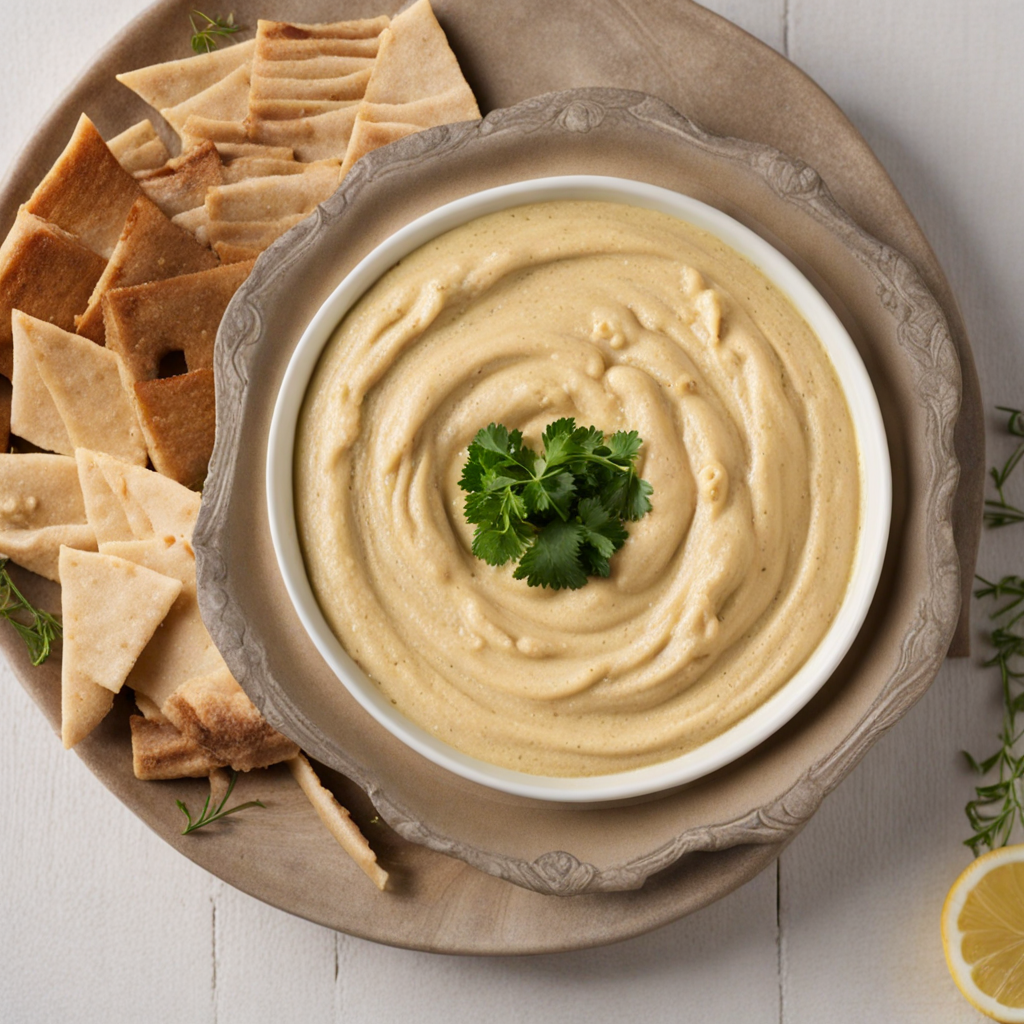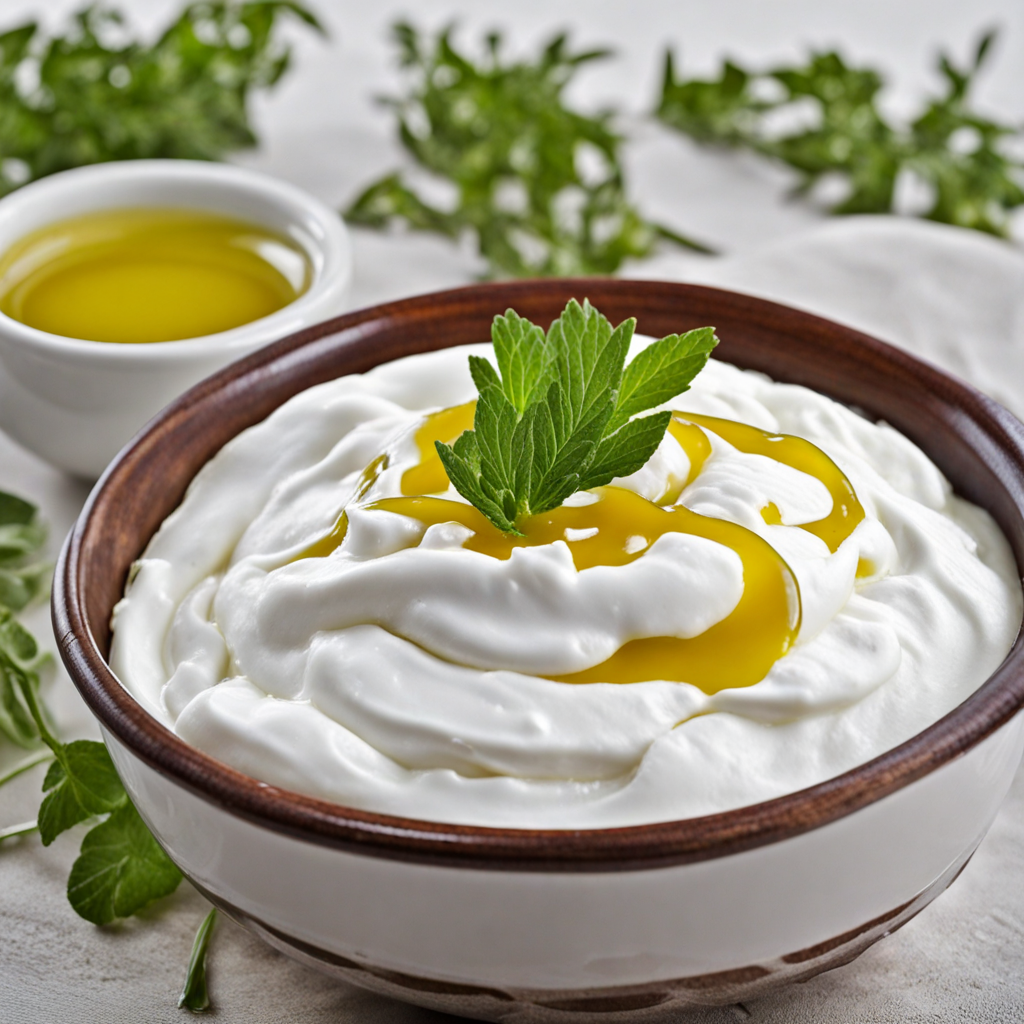Hummus
Hummus from Jordan is a delightful and creamy dip made primarily from blended chickpeas, tahini (a sesame seed paste), lemon juice, and garlic. The texture is smooth and velvety, making it perfect for spreading or dipping. The balance of flavors offers a nutty richness from the tahini, a refreshing tang from the lemon, and a subtle earthiness from the chickpeas. This dish is not just a culinary indulgence but a traditional staple in Jordanian cuisine, often served as a mezze alongside warm pita bread or fresh vegetables, inviting you to savor each bite. One of the unique aspects of Jordanian hummus is the way it is often garnished. A drizzle of high-quality olive oil is commonly added, enhancing the dip’s flavor profile and giving it a beautiful sheen. Additionally, toppings such as ground cumin, paprika, or even whole chickpeas can be sprinkled on top, adding extra layers of flavor and visual appeal. This attention to detail transforms the humble hummus into a dish that is both comforting and sophisticated, showcasing the pride Jordanians take in their culinary heritage. Eating hummus in Jordan goes beyond just the taste; it embodies the spirit of communal dining. It is typically enjoyed in a shared setting, where diners scoop their portions with pita, fostering a sense of connection and warmth. Each bite transports you to the heart of Jordanian culture, where food is a celebration of hospitality and togetherness. Whether you are dipping, spreading, or simply savoring the rich flavors, Jordanian hummus is an experience that opens up a world of taste that is both familiar and uniquely enchanting.
How It Became This Dish
Origin of Hummus The origins of hummus are a subject of passionate debate among historians and food enthusiasts alike. While its exact birthplace remains ambiguous, many believe that it originated in the Levant region, which includes modern-day Jordan, Lebanon, Syria, and Palestine. The word "hummus" comes from the Arabic term for chickpeas, "ḥummuṣ," which were cultivated in the Middle East for thousands of years. Archaeological evidence suggests that chickpeas were one of the earliest cultivated legumes, dating back to around 7500 BC in the region. The earliest references to a dish resembling hummus can be found in a cookbook from the 13th century, attributed to a Muslim scholar in the Levant. This early version consisted of mashed chickpeas mixed with vinegar, garlic, and other spices, a precursor to the hummus we know today. Over time, the dish evolved, incorporating ingredients such as tahini (sesame paste), lemon juice, and olive oil, which are staples in Middle Eastern cuisine. \n\n Cultural Significance In Jordan, hummus is more than just a dish; it is a symbol of hospitality and community. Traditionally served as part of a meze platter, hummus is often accompanied by an array of flavorful dishes such as tabbouleh, baba ghanoush, and stuffed grape leaves. It is common for families and friends to gather around a table, sharing food and conversation, and hummus serves as a centerpiece of that experience. Hummus is also a dish that transcends social and economic boundaries in Jordan. It is enjoyed across all strata of society, from street vendors selling it in bustling markets to upscale restaurants offering gourmet versions. This widespread appreciation for hummus underscores its role as a unifying element in Jordanian culture, representing a shared heritage and identity. \n\n Development Over Time As hummus spread throughout the region, its preparation and presentation varied according to local tastes and available ingredients. In Jordan, for instance, hummus is often made with a generous drizzle of olive oil and a sprinkle of paprika or sumac on top. The texture can range from creamy to chunky, depending on personal preferences and regional styles. The globalization of food culture in the late 20th and early 21st centuries facilitated the introduction of hummus to international audiences. It began appearing in Western supermarkets and restaurants, often marketed as a healthful, protein-rich snack. This rise in popularity has led to numerous variations, including flavored hummus varieties infused with ingredients like roasted red peppers, garlic, and herbs. However, for many Jordanians, the traditional recipe remains the gold standard. \n\n Hummus and Identity The dish has become a focal point in discussions about cultural identity and culinary heritage in the Middle East. In recent years, competing claims over the "authentic" origin of hummus have emerged, particularly between Lebanon and Israel. These debates often reflect broader political tensions in the region. For instance, in 2010, Lebanon attempted to register hummus as an "intangible cultural heritage" with UNESCO, emphasizing its importance to Lebanese identity. Despite these disputes, hummus continues to be a source of pride for many Jordanians. In Jordan, it is common to see hummus served at weddings, family gatherings, and national holidays, reinforcing its status as a beloved dish. The act of sharing hummus with loved ones is seen as a gesture of love and generosity, embodying the spirit of Jordanian hospitality. \n\n Modern Trends In recent years, the popularity of hummus has led to a surge in artisanal and gourmet hummus shops, not only in Jordan but across the globe. These establishments often experiment with innovative flavors, combining traditional ingredients with modern culinary techniques. For example, some shops have begun to incorporate superfoods like beetroot or avocado into their hummus recipes, catering to health-conscious consumers. Furthermore, the rise of social media has facilitated the sharing of hummus recipes, techniques, and presentations, allowing individuals to connect over their love for this dish. Food bloggers and influencers showcase beautiful platters of hummus, often elevating the dish to an art form and inspiring a new generation to experiment with traditional recipes. \n\n Hummus in International Cuisine The internationalization of hummus has also led to its incorporation into various culinary traditions around the world. In the United States and Europe, for example, hummus is often served as a dip for vegetables or pita bread, and it has become a popular addition to salads and sandwiches. This adaptation highlights the versatility of hummus as a dish that can complement a wide range of flavors and ingredients. Despite these adaptations, many chefs and home cooks strive to maintain the integrity of traditional hummus recipes. The balance of flavors—earthy chickpeas, nutty tahini, zesty lemon, and aromatic garlic—remains fundamental to the dish's appeal. For those who appreciate the cultural significance of hummus, creating it from scratch is seen as a way to honor its rich history. \n\n Conclusion In summary, hummus represents a complex tapestry of history, culture, and identity that continues to evolve. From its ancient origins in the Levant to its current status as a global phenomenon, hummus has transcended geographical and political boundaries to become a beloved staple in various cuisines. In Jordan, it remains a dish deeply embedded in the social fabric, celebrated for its taste and its ability to bring people together. Whether enjoyed in a bustling market, at a family gathering, or as part of a gourmet meal, hummus is a testament to the enduring power of food as a connector of people and cultures.
You may like
Discover local flavors from Jordan







